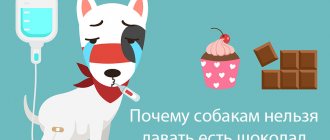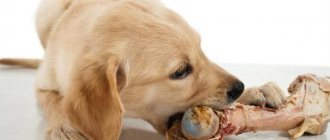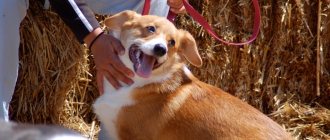Most dog breeders believe that your pet can and should be provided with bones as often as possible. Few people understand which of them can be introduced into the diet and in what form.
Indeed, in fact, even an ordinary bone can cause an animal to feel unwell and even die. Have you got a dog? Then remember: under no circumstances, ever, under any circumstances, feed her tubular chicken bones.
Symptoms
There are cases when the owner lost sight of the animal, did not keep track, it climbed into the trash can and ate bones. Kind guests can also treat their pet from the table without thinking about the consequences. How can you tell if an animal has eaten bones? You can determine this by its state:
- lack of appetite;
- lethargic state;
- discomfort, anxiety;
- pitiful whining;
- cough;
- excessive salivation;
- vomit;
- constipation;
- blood in stool;
- bleeding.
Complications can vary in severity. But in any case, the dog should be shown to a doctor.
Consequences of the animal's condition from eating bones:
- The animal can injure its throat . And not just scratch the mucous membrane, but also pierce it with a sharp bone. If this happens in the area of the vocal cords, where there are many vessels, bleeding may begin.
- If a pet swallows a bone, it can damage the trachea . It is very dangerous. If the veterinary clinic is far from you, then you will not have time to save him. He will bleed to death or choke on blood.
- Suffocation. The bone gets stuck in the teeth, and the dog may choke on its own saliva. We need urgent and timely help.
- When a bone is swallowed, it gets stuck in the stomach . For this reason, the dog begins to vomit. There is a risk of death from dehydration. Since the bone does not leave the body along with vomiting. This problem can only be solved surgically.
- Accumulation of bones. In this case, small bones clog the stomach and do not move further down the esophagus. A dog's metabolism becomes disrupted over time. The animal may die either from bleeding or from obstruction.
- Perforation of the small intestine. This also leads, like most of the described cases, to bleeding. The animal urgently needs surgery and a long recovery after it.
- Blockage of the colon. Bones that are almost digested create a blockage in the intestines. The animal experiences difficulty defecating and begins to suffer from constipation. When defecating, there is pain and some blood may come out along with the stool.
Everything can end well, your pet won’t even notice how he ate the bone and didn’t experience any problems. But some cases can lead to the death of the animal.
What kind of bones can you give your dog?
Ideally, then only those sold in pet stores (toys or pressed wires). But experienced veterinarians fully accept the giving of so-called “sugar” pork bones. They are quite “sticky”, and therefore do not form sharp fragments when chewed. You can give them to your pet from time to time.
But! They should not be offered to puppies up to about six months anyway , since animals at such a young age can easily damage tooth enamel. In addition, you should please your pet with “sugar” seeds no more than once a week. In addition to the pleasure of fighting with the treat, the dog will brush his teeth at the same time, which is also good.
Finally, chicken is not always so bad either, but only when it comes to the backs and necks. These parts do not contain dangerously splintering bones that can injure the gastrointestinal tract or cause constipation. Again, this does not apply to puppies, who should not be fed such “treats” in any situation. Their digestive system cannot fully process them, as a result of which severe complications may develop.
What to do if you choked?
The first thing to do is to calm down yourself and not panic. Calmly examine the animal and understand how big the problem is. If you see that your dog’s tongue has turned blue and he is having difficulty breathing, then you need urgent help from a specialist.
Attention! You cannot pour anything down an animal’s throat; its swallowing reflex may be impaired, and it will simply choke.
If contacting a specialist is not possible, then proceed to help yourself. Please note that the activities for large and small dog breeds are different.
Puppies and small breeds
Algorithm of action to help small breeds:
- Place the animal on your lap.
- Press it to your chest.
- Place the fist of one hand in the place where the chest area meets the stomach.
- Support your head with your left hand.
- Squeeze the animal, moving the pressure upward.
Once the bone is out, try to remove it from your mouth quickly to avoid re-swallowing.
Large
Algorithm of actions to help large breeds:
- Stand behind the dog.
- Wrap your arms around her under her ribcage.
- Place the fist of your right hand under the sternum.
- With your left hand, grab your torso and grab the elbow of your right hand.
- Start squeezing.
Usually about 4-6 times are enough, and the dog is freed from the bone. But if this does not happen, then urgently call a specialist.
If you see that the bone is at the very beginning of the esophagus, you can remove it manually. To do this, you need to open the dog's mouth and press the tongue well with a spoon. Using tweezers, carefully pull out the bone. The main thing is not to push it further.
If you manage to remove it, watch the animal. If blood appears in the saliva, promptly take your pet to the veterinarian.
The dog ate a fish bone
The fish bone is small in size. It is quite sharp and if it gets into the throat it can pierce its walls and cause pain to the pet. The first symptoms that an animal has swallowed a bone are insomnia and refusal to eat. Often the animal begins to whine while feeding. If a dog swallows a bone, every pet owner should know what to do in such a situation. You need to do the following:
- with the help of outside help, open the dog’s mouth wide and examine the throat;
- carefully examine the animal's teeth. Fish bones can get stuck between teeth;
- If the bone is noticeable, use tweezers to remove it.
Note! If there is no bone in the mouth and throat, and the dog continues to feel unwell, it is necessary to visit a veterinarian.
The dangers of fish bones
Swallowed it without choking
In this case, you must prevent the moment when the bone can cut the walls of the stomach. You need to act immediately, without delay. You don't have to wait until your dog goes to the toilet to check his stool. You must be proactive.
Experienced dog breeders recommend giving your dog a piece of wax candle right away. The size should be something that the dog can easily swallow. You can give up to three times a day. The wax quickly begins to melt in the body and envelops the walls of the esophagus and the bone itself.
You can use another method if you don’t have a candle at hand. Soak a piece of cotton wool with vegetable oil or Vaseline.
Then all you have to do is monitor her condition. If it worsens, consult a doctor immediately. There are some things you definitely shouldn't do:
- Do not induce vomiting in your dog. Otherwise, spasms can only make things worse. The bone will scratch the walls of the stomach.
- Avoid the laxative idea for the same reason.
Steps to take immediately
If your dog just ate cooked chicken bones, there are a few steps you need to take right away.
When something terrible does happen, it is important to remain calm so you can do what you need to do. Don't discipline your dog immediately. You need to remain calm and not frighten the puppy. Below we provide step-by-step instructions on how to handle this difficult situation.
Step 1: Prevent further access to the bones
The first thing you need to do is make sure there is no other place for your dog to get the bones. It's also a good idea to make sure that no other animals in the house come across the bones and end up in the same situation. Close the dog quickly. Afterwards, quickly clean up any spilled bones to ensure there are no further hazards.
Step 2: Call your veterinarian
He can give you valuable advice on what to do and what not to do. They can also help you weigh the risks of leaving bones in place and advise you on your dog's situation based on his size, breed and other factors.
There is a risk of bones getting stuck. Unless your dog is in distress, most veterinarians do not recommend inducing vomiting. Your veterinarian may ask you to feed your dog something to "soften" the bones and increase the likelihood that he will progress as far as possible, minimizing potential damage.
It could be bread, pumpkin or even asparagus! Trust your veterinarian to advise you on the best course of action! Most veterinarians won't ask you to rush them. They should give you personalized advice to give your dog the best chance of passing chicken bones safely.
Pumpkin recipes for dogs
Step 3: Don't Self-Medicate Your Dog
Many people panic. Some dog owners try to treat their dogs themselves. They may be concerned about the cost of going to the vet or may be reluctant to admit to the vet what happened.
In any case, they quickly explore possible options and try to cope on their own.
However, this can be dangerous.
For example, you will often find instructions on how to induce vomiting in a pet. Chicken bones can get stuck moving back up. They can get stuck somewhere and cause more damage.
They will also be difficult to remove on the way back. Some commonly recommended medications are not safe if your dog has eaten chicken bones. Following instructions from anyone other than your veterinarian can be dangerous. This is true even if the person giving the advice says that this is the course of action his veterinarian recommended.
Step 4: Watch for the signs
It is important to monitor your dog closely over the next 24-48 hours. You will need to watch closely for signs such as abdominal pain, lethargy, and black stools. You should also keep a close eye on any behavior that may seem unusual.
How to prevent it?
Only the owner of the animal can take all the actions that will help prevent the dog from eating bones:
- keep a bag of garbage out of reach of your dog, from which the dog can steal the desired treat;
- do not allow the animal close to garbage cans, near which residents could leave food for homeless animals;
- warn guests not to throw bones from the table to your pet;
- Teach your children not to feed your dog chicken bones.
The most important thing is proper upbringing of your pet. A well-mannered dog will not crawl through landfills in search of food, and will not take treats from strangers.
Treatment options
If an animal is prone to insufficient bowel movements after eating bones, slippery (red) elm bark powder is added to its diet. The product is given according to the instructions until the animal’s digestion improves.
If the dog has eaten too much bones and suffers from constipation for more than 3 days, do an enema. For small breeds they use a syringe, for large dogs - an Esmarch mug. The container is filled with warm boiled water, and the animal’s intestines are washed.
Treatment methods for severe constipation
If no methods help, the animal becomes worse, you should contact a veterinarian. At the appointment, they accurately describe the situation, tell how long the animal has been constipated, how many bones it has eaten, and what help was provided at home.
The clinic will conduct a full examination using x-rays. Based on the results, treatment is prescribed. If the intestinal blockage is serious, there are fragments stuck in the intestinal mucosa, abdominal surgery will be prescribed.











